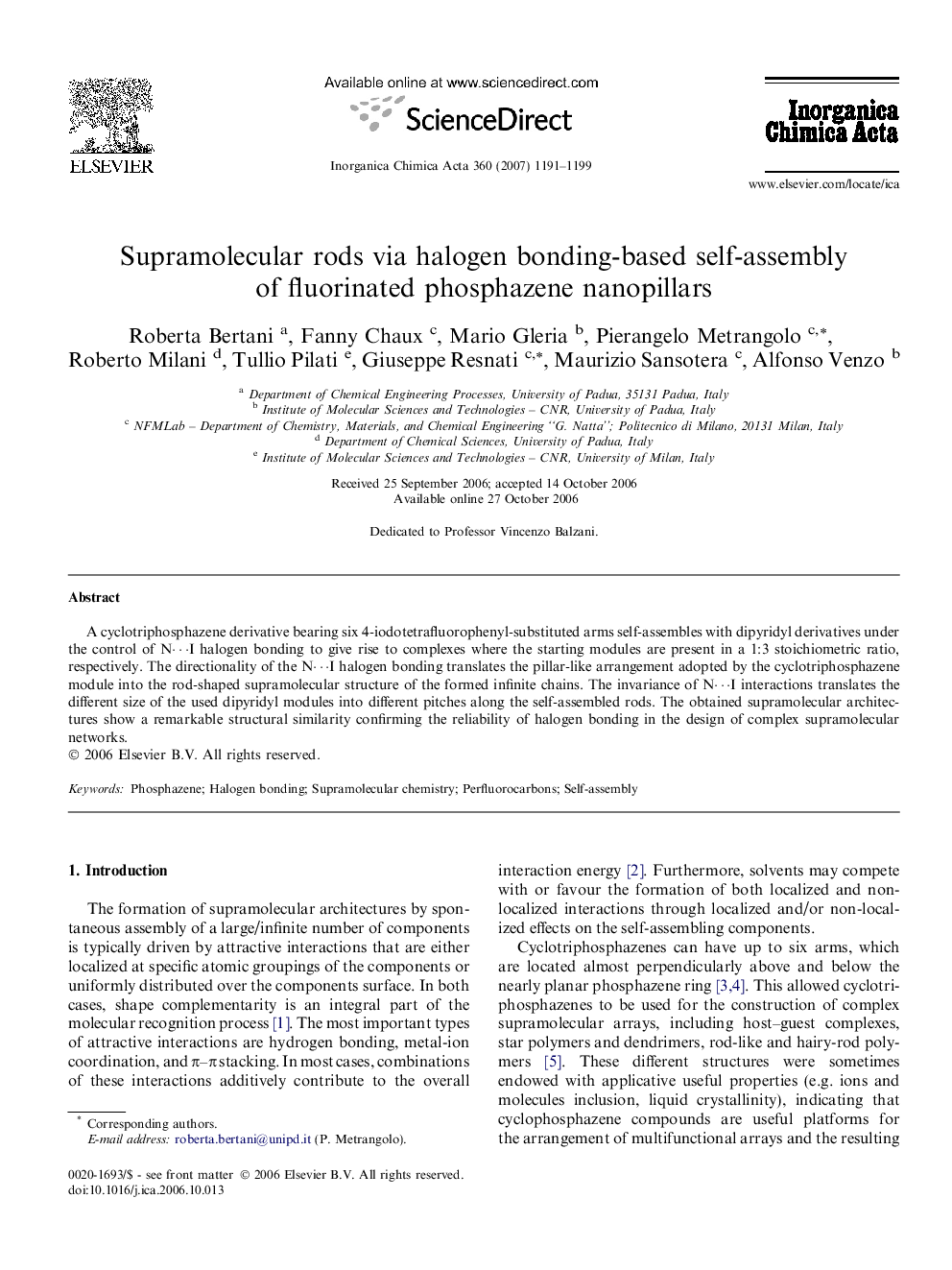| Article ID | Journal | Published Year | Pages | File Type |
|---|---|---|---|---|
| 1312800 | Inorganica Chimica Acta | 2007 | 9 Pages |
A cyclotriphosphazene derivative bearing six 4-iodotetrafluorophenyl-substituted arms self-assembles with dipyridyl derivatives under the control of N⋯I halogen bonding to give rise to complexes where the starting modules are present in a 1:3 stoichiometric ratio, respectively. The directionality of the N⋯I halogen bonding translates the pillar-like arrangement adopted by the cyclotriphosphazene module into the rod-shaped supramolecular structure of the formed infinite chains. The invariance of N⋯I interactions translates the different size of the used dipyridyl modules into different pitches along the self-assembled rods. The obtained supramolecular architectures show a remarkable structural similarity confirming the reliability of halogen bonding in the design of complex supramolecular networks.
Graphical abstractA cyclotriphosphazene derivative bearing six 4-iodotetrafluorophenyl-substituted arms self-assembles with dipyridyl derivatives under the control of N⋯I halogen bonding to give rise to complexes where the starting modules are present in a 1:3 stoichiometric ratio, respectively. The directionality of the N⋯I halogen bonding translates the pillar-like arrangement adopted by the cyclotriphosphazene module into the rod-shaped supramolecular structure of the formed infinite chains.Figure optionsDownload full-size imageDownload as PowerPoint slide
